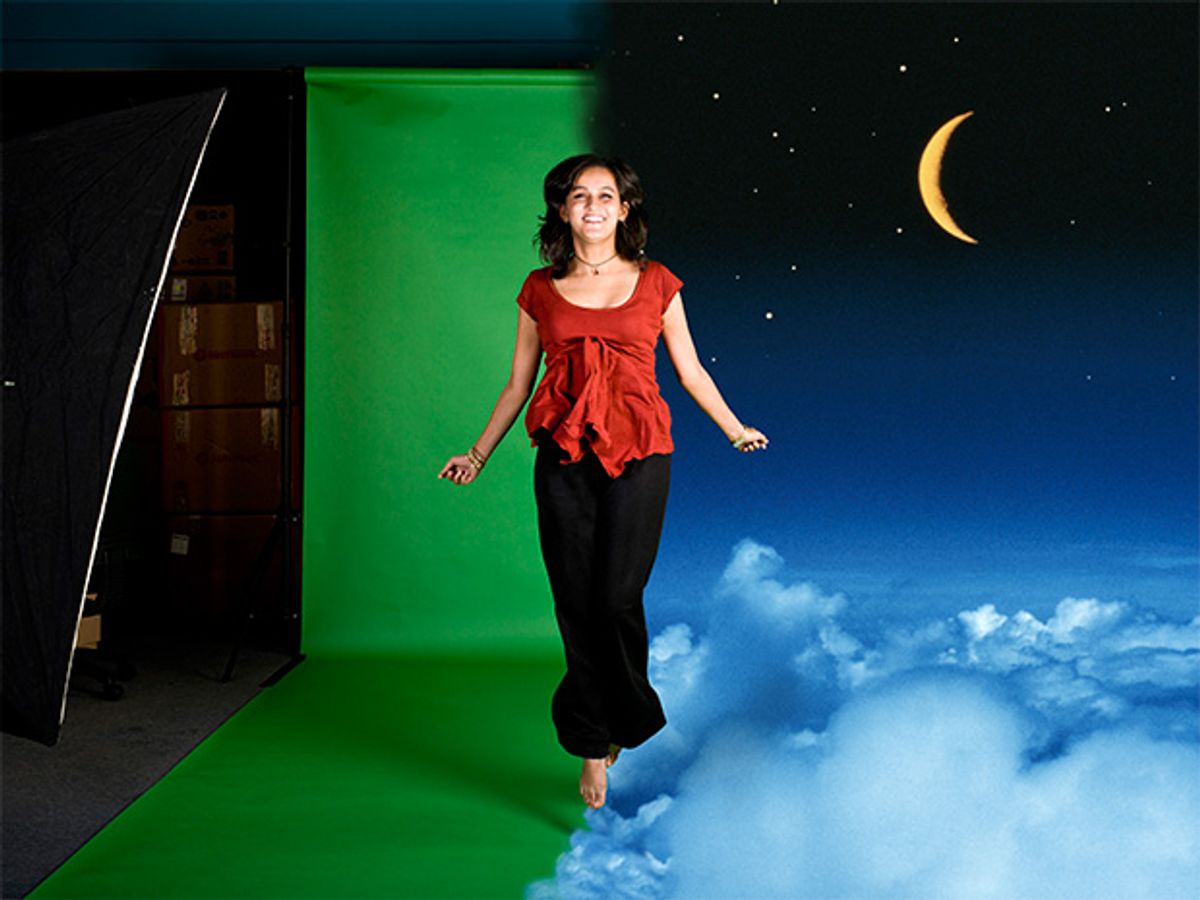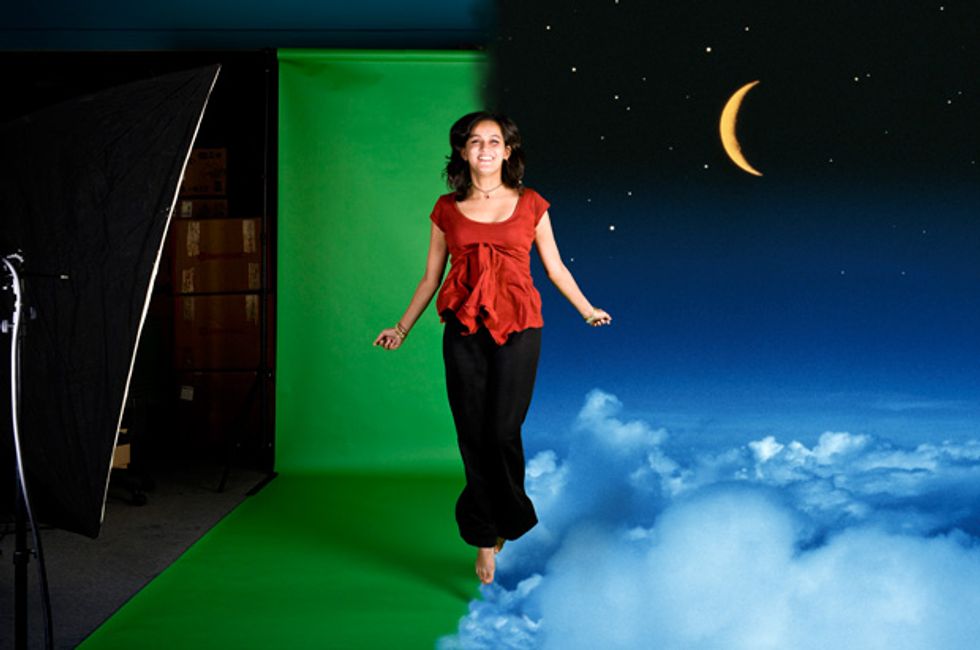Keya Banerjee: Magical Realism
This specialist in reality-based movie effects is happiest when you don’t notice her work

This profile is part of IEEE Spectrum’s Special Report on Dream Jobs 2009.

Keya Banerjee says she was never destined to be a great actress. Her father, the actor Victor Banerjee, is renowned for his leading roles in such films as David Lean’s 1984 classic A Passage To India. But Keya’s one star turn, as Jocasta in her high school’s staging of Oedipus Rex, was short and none too sweet. On opening night, the show’s producers had second thoughts about her, and the production closed after only two performances. “They realized they made a mistake,” Banerjee recalls.
Truth be told, she wasn’t all that crushed. Her great passion wasn’t drama. It was computers. She’d always been drawn to techie pursuits in school. The AV club and stage crew were her haunts. After encountering a personal computer for the first time at age 12, she thought, “Oh, my God, this is what I want to do.” She begged her parents for one.
They finally relented 10 years later, in 1998. They gave her a generic Windows 98 machine when she graduated from St. Xavier’s College, the Jesuit institution in Mumbai where her mother had gone. “It was a huge deal for me,” Banerjee says, referring not to graduation but to that computer. “I mean, the biggest day of my life.”
Today, as a visual-effects coordinator at Tata Elxsi’s Visual Computing Labs, in Mumbai, she supervises teams of designers, animators, compositors, and other computer specialists who conjure up special effects to accommodate the visions of some of India’s top movie directors. Computer effects are increasingly what drive Bollywood blockbusters. But Banerjee, perhaps uniquely among her peers in India, focuses on small, independent films.
She can seem to be a bundle of paradoxes. She hates to drive and doesn’t own a car, yet her single avowed obsession outside the office is Formula One racing. She works in the motion picture industry, but she hardly ever watches Bollywood movies. “I’ll go and see a film if someone I know has worked on it,” she says. “Or if my father is in it. I don’t watch cheesy romances,” she adds. (Victor, at 62, still gets roles regularly in Bollywood productions.)
Although her dad was a pretty big star in his day, he never let it go to his head, she says. She didn’t grow up on film sets or in swank hotels. And she insists she still isn’t a Bollywood creature.
Maybe so, but late on a Tuesday night she seems in her element at Zenzi, an ultrafashionable watering hole in Mumbai’s Bandra district, where many Bollywood stars live and carouse. The place is foggy with cigarette smoke, despite Mumbai’s recent ban on smoking in public buildings. Banerjee and a few friends sit at a big round table sipping drinks.
Beautiful people stop by every 15 minutes or so. She greets them by first name; there are eruptions of hugs and air kisses. She responds, repeatedly, to the inevitable “How are you?” with an ebullient and maybe slightly facetious “Super duper!”
After some small talk about sports, she confides to a reporter, “I am one of the only Indians on the planet who can’t stand cricket.” She and her dad both love Formula One racing, and they call each other during races to share the latest results when one is on a set working and the other isn’t. “It’s a daddy-daughter bonding thing,” she explains.
As an adolescent, her main infatuation was with Adobe Photoshop and Premiere, software that allowed the manipulation and layering of moving images. She spent many blissful hours assembling scraps of video and music into digital movie clips for her own amusement. “Eagles flying, people dancing. I put it to James Bond music,” she says. “It was quite ridiculous, but it was fun. My parents had to tear me away from it to eat lunch and dinner.”
In the summers during college, in the middle and late 1990s, she worked as an intern doing special effects and animation, which were then just starting to take off in India. After college, she landed an entry-level job at UTV, India’s biggest media and entertainment conglomerate. Assigned to UTV’s animation division, she started specializing in the subdiscipline known as compositing, in which animation effects, background and foreground imagery, and perhaps live-action footage are all digitally combined, layer by layer, into the final product seen by viewers. She learned to use the major compositing-software packages of the day, including Digital Fusion, 3D Studio MAX, and QFX.
After a year, though, she was ready to plunge more deeply into the creative and technical aspects of her chosen profession. In the summer of 2000 she took a course in computer graphics at Harvard and then enrolled in a few visual-effects courses at the University of California, Los Angeles. She was both short on cash and determined to see the big flat middle of the United States, so she rode a Greyhound bus from Boston to Los Angeles. “It was quite fantastic,” she insists. “I met a bike rider who had had an accident, and so he was on the bus. I had to talk to him to keep him awake. A woman tried to convert me to Christianity. There were some people going to Vegas. They were fantastic. This is culture. I saw a lot of corn.”
She loved UCLA. She shared a Hancock Park mansion and swimming pool with eight other twentysomethings; the big old house was owned by a friend of her father’s. She studied postproduction for film and television and became adept at Shake, a popular visual-effects and compositing package.
After returning to India in the winter of 2001, she bounced around several major effects studios, earning her stripes as a compositor and visual-effects supervisor. She worked on or supervised visual effects for a television show about a teenage witch, several motion pictures, and television commercials for sporting goods and automobile tires. Her big break came in 2003, during a second stint at UTV, this time in the motion picture division. She was assigned to be the on-set supervisor for visual effects for a motion picture called Lakshya, set during the 1999 Kargil war between India and Pakistan. The movie wound up with 38 minutes of special effects—a huge amount for a Bollywood film in those days.
Set in the mountainous region of Kashmir, where India and Pakistan or their proxies have clashed repeatedly, the movie tells the story of an aimless young man who finds purpose and discipline as an Indian soldier in the Kargil conflict. Many of the effects involved mountain-climbing scenes; they were shot with actors in harnesses clambering (or being hoisted like sacks of potatoes) over an 18-meter-high faux mountainside on a set in Mumbai. In the finished film, the men appear to be high up on a jagged cliff. To achieve that effect, Banerjee used chroma technology, in which blue screens on either side of the fake mountain and also below it were replaced during compositing with imagery shot on location.
Though that climbing scene was shot in Mumbai, much of the rest of the action photography, including battle scenes, was done in rugged and remote locations in Kashmir. “I lived there for three months with the entire crew,” she explains. “It was actually in many ways the best and worst experience of my life.” She was thrilled to be in charge, at the tender age of 27, of the visual effects for a major motion picture. But life in Kashmir was no picnic. “The weather went to –12 degrees, and that was difficult for us because we were shooting nights and we were staying in tents and in valleys. Our bottles of water were frozen.”
She forced her father, who, she says, never watches movies (not even his own), to watch that one. “He didn’t know a lot of what I had done because they were reality-based effects,” she explains. “So I had to keep pointing out, ‘I’ve done this, I’ve done that.’ And he kept saying, ‘Oh, very good. Oh, very good.’”
After Lakshya, she freelanced for three years, doing the visual effects for many tire commercials—in one, a man catapults out of the driver’s seat of his convertible and “starts floating through space because he’s on such good tires,” she says. Then, in 2007, she landed a job at the Visual Computing Labs, part of the sprawling Tata conglomerate, which hired her to take charge of its work on independent films.
The typical Bollywood production has a big cast and lots of choreography and songs; you can count on at least one scene in which exquisitely dressed and coiffed lovers sing to each other while walking among scattered trees. But the films that Banerjee works on are more subtle and personal.
Her current project is a small-budget film called Havai Dada, about a man who never realized his youthful dream of becoming a pilot and who in his old age comforts himself with paper airplanes—lots and lots of them.
“It’s a beautiful little story,” she says, beaming. “It really is. There’s nothing commercial about it. There’s no singing and dancing around trees. It’s a soft film. An actual story.”
Because it’s still in production, she doesn’t want to divulge too many details about the effects. But she says the digital paper planes were choreographed, their motion changing, as though they were characters, with the mood of the movie. So her big challenge was portraying their tightly scripted aerial dances while still making them appear like plain old paper planes.
Her professional life consists of several different activities. Some days, she’s on set or on location, advising a director on how he should shoot a scene if he cares about how much its special effects will cost. Other days, she’s working with animators, designers, and others at the office to realize the director’s vision for a scene. And some days she’s out meeting with directors or producers, trying to persuade them to hire Tata Elxsi to do the effects for their upcoming pictures.
At other times, she’s scouring the Internet or talking to friends in the industry to try to get the details of how an intriguing new effect was done. “I’m a member of a lot of the visual-effects societies online, so I try and keep up on whatever’s going on,” she says. “If I see something interesting, I’ll just go and read up on that. It’s not forced R&D. It’s my choice. I read up on what I find interesting that day. It might be a render facility, or it might be a kind of new software, or it might be an upgrade of the software that I’m currently working with. But it’s up to you, actually, as an independent human being, to make sure you’re up-to-date.
“The shoot days are my favorite,” she adds, “because I get to interact with new people. I get to see new systems, new ideas, new cultures of working. It gives me more exposure, and it allows me to experiment. It allows me to grow in terms of trying something new to get a new effect, or trying a different method. Before a shoot, I’ll do enough research to go on set and say, ’Can we try it this way?’ And if the director is open to it, well and good. I’ve learned. I enjoy it. It’s great fun.”
To Probe Further
For more articles and special features, go to Dream Jobs 2009.